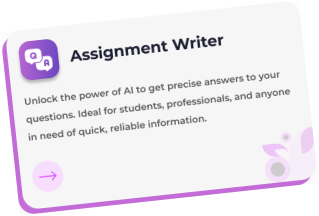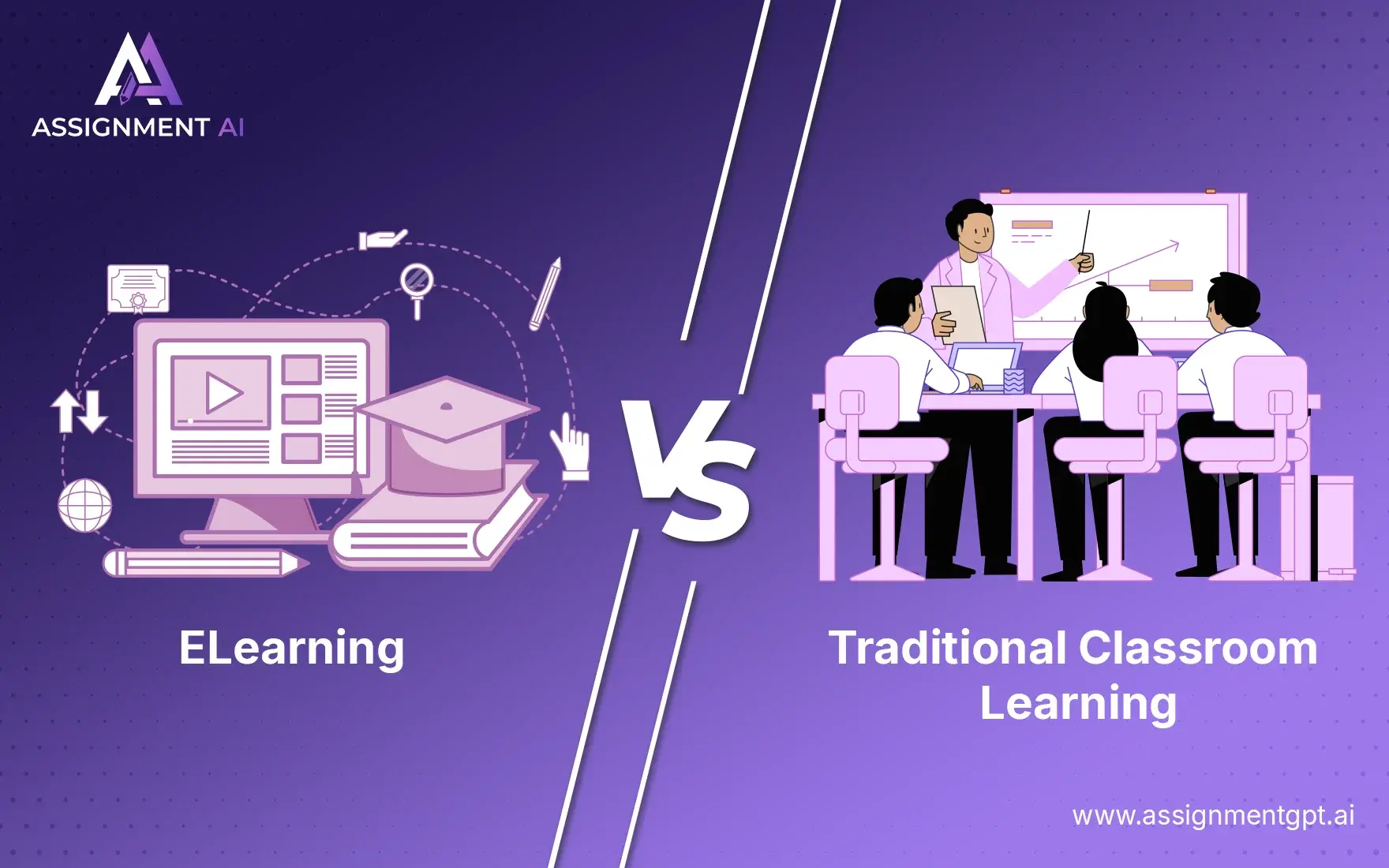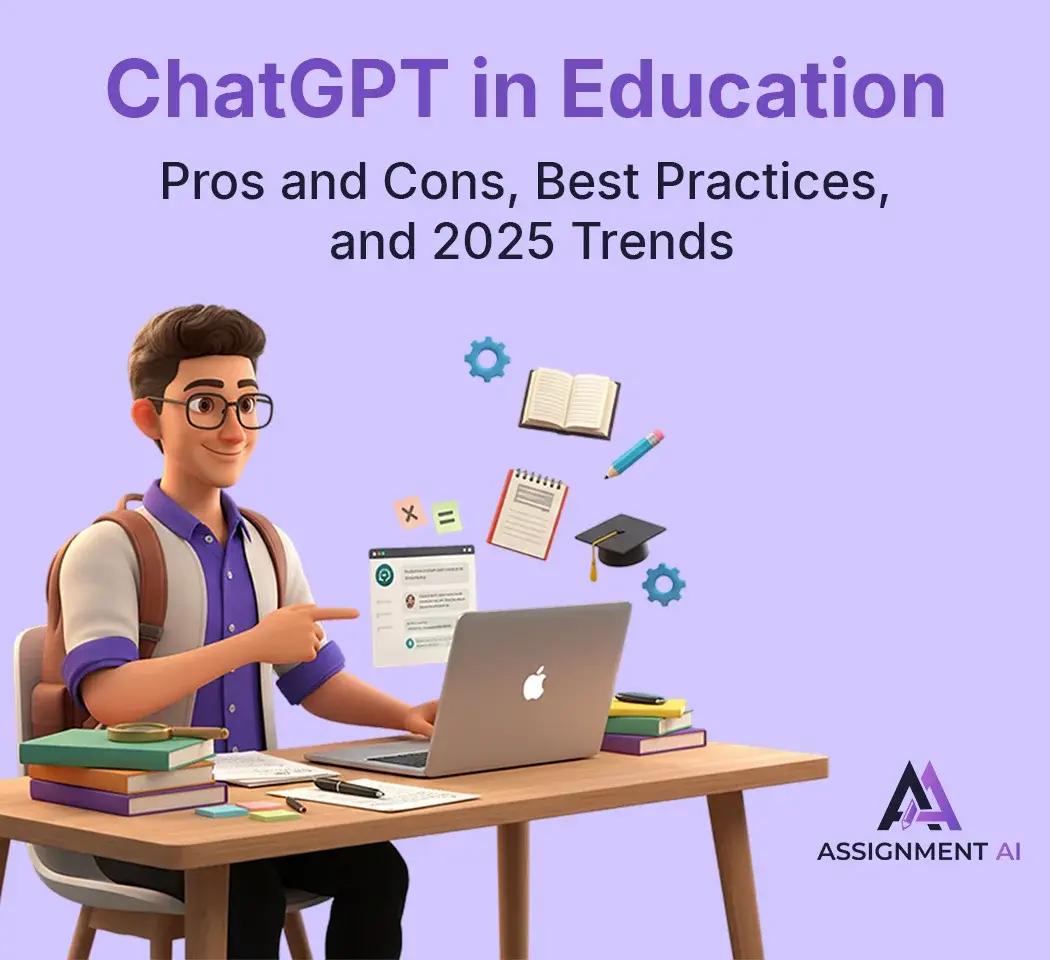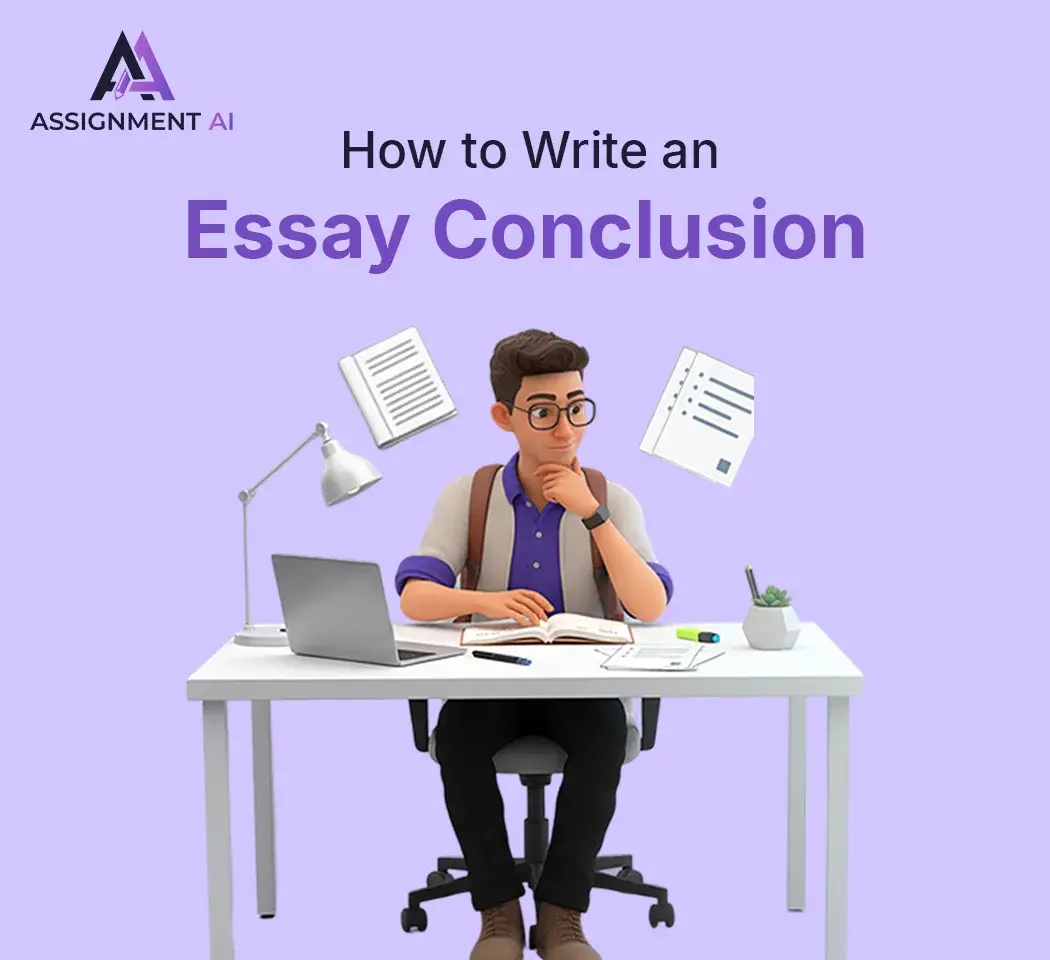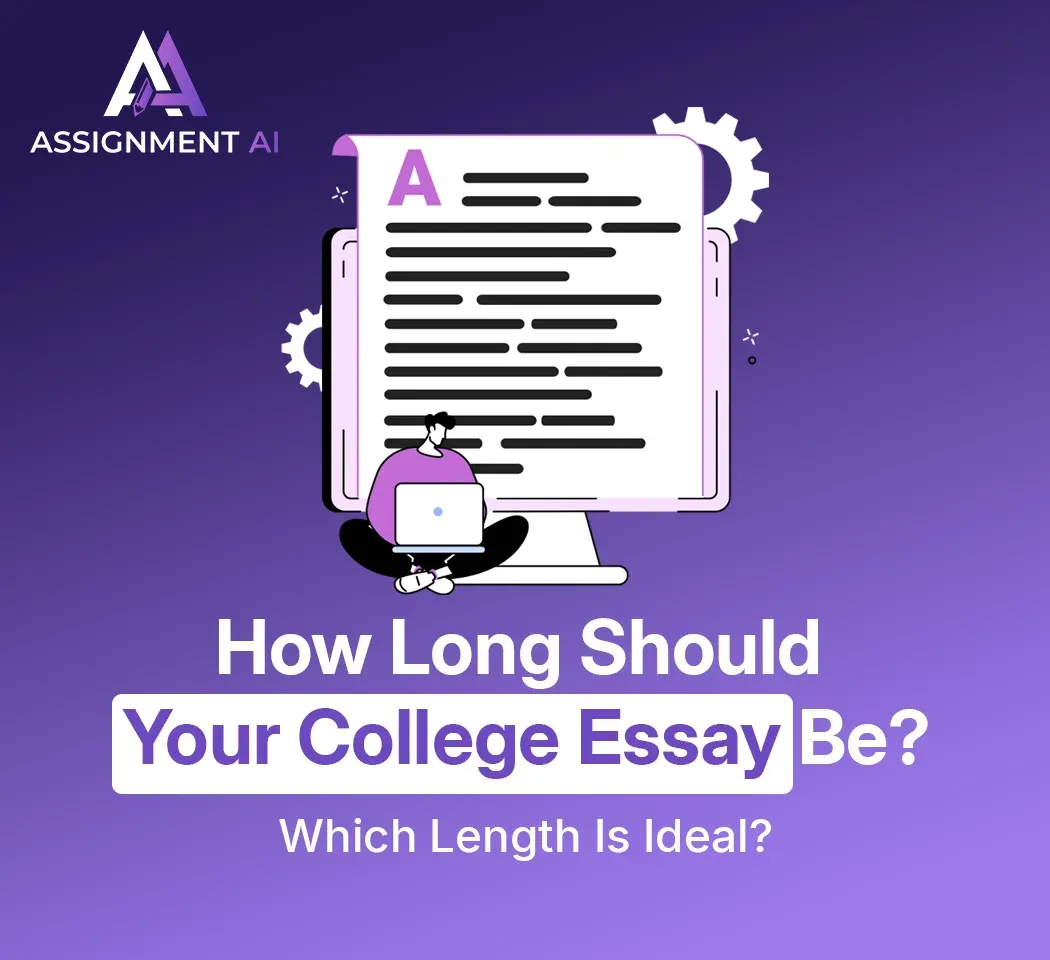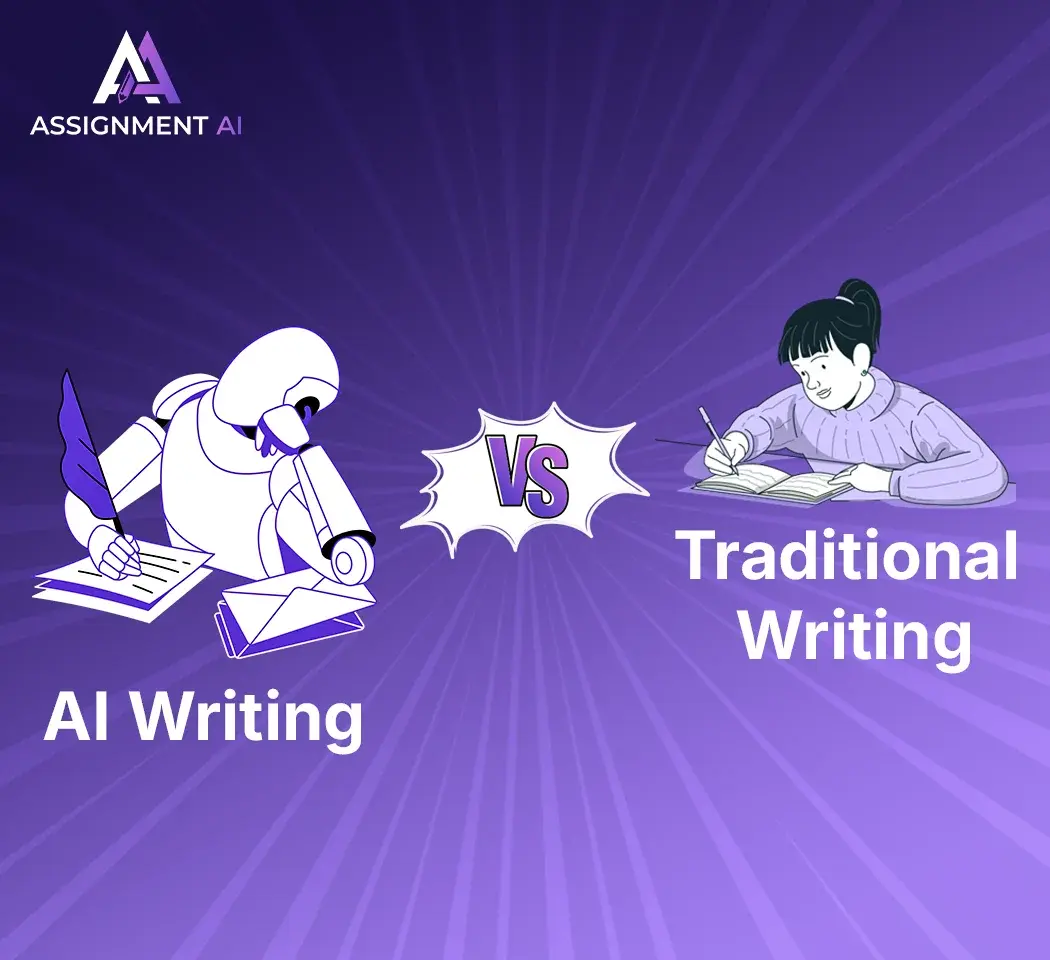AssignmentGPT Blogs
Have you ever considered the reasons why some individuals can learn quicker online learning, while others prefer to learn using a chalkboard in the classroom?
I regretfully admit I experienced both the hustle of the classroom and the flexibility of online learning tools; each can certainly offer pros and cons. The key is to find what suits your learning style, your goals, and your lifestyle.
In this comprehensive article, we will reflect on the elements of eLearning and traditional classroom learning, alert you to how AI homework helpers are changing education, and reveal what works best in 2025 and beyond.
Quick Summary
In essence, both eLearning and traditional classroom education have their own distinct pros and cons, and it is a matter of choice. eLearning has an advantage in the form of being able to study anytime, anywhere, with an Internet connection and is more flexible and accessible. Further, it personalizes your learning experience through AI and platforms that personalise lessons to your pace and likes or dislikes.
Traditional classroom education engages face-to-face and includes the level of discipline you cannot only build but also appreciate as a part of the learning experience, both socially and academically. With cost and convenience, eLearning is often a win-win for more than just affordability, yet traditional learning builds emotional connection and collaboration in the classroom based on the mainstays of learning.
Our focus in this article:
- What is e-learning versus a traditional classroom?
- How does e-learning versus a traditional classroom work?
- Why is e-learning proving so useful for students?
- At the end of this article, I'll tell you how you can enhance your e-learning using AI tools.
Flexibility and Accessibility
One of the primary benefits of eLearning is freedom. You are able to learn on the go, while you're working, or very late at night and, as long as you have a device and Wi-Fi, once enrolled, you can learn from anywhere. The rise of platforms like Coursera, Udemy, and edX has made taking a course from Stanford or MIT possible without us ever having to leave home.
Traditional learning inherently involves some level of structure and commitment to a schedule and location. If you miss a class, chances are you've missed some important concept, and it can be difficult to catch up. On the other hand, structure brings some discipline. Teachers typically hold students accountable for meeting deadlines, whereas in a self-paced online environment, you are solely accountable to yourself.
E-learning aligns with accessibility and flexibility, whereas a traditional classroom experience aligns with consistency and accountability.
Personalized Learning Experience
Personalized learning is the strength of online (or eLearning) education. The companies behind these platforms use artificial intelligence (AI) algorithms to modify content based on how you are doing in a given content area.
If you're weak in one of the topics that are being instructed under that content area, it automatically sends you more quizzes or explainer videos for that particular topic to help you improve. For example, AI homework helpers are assisting students of all ages and abilities by breaking down complicated assignments into step-by-step explanations.
The new technology is not giving students the answers as it did when students just needed a stat answer, it is teaching you the rationale behind the answer, which builds confidence and understanding. In traditional classrooms, personalized learning depends entirely upon the teacher's attention and time. With 30-50 students in a room, it is hard for a teacher to give students personalized attention based on their individual learning needs.
So, on this front of custom learning, eLearning, supported and powered by AI, will definitely win this round.
Interaction and Engagement
In a classroom setting, interaction feels seamless. You can ask a question, talk about an idea, and clarify any questions you may have in an instant. It has a feeling of belonging and competition, which is important for motivation.
Online learning has changed significantly in the past few years. Live Q and A sessions, discussion boards, and interactive polling can make participation and engagement much more lively than in the past. Applications like Zoom, Google Classroom, and MS Teams are bringing the classroom experience online.
Gamification, badges, and leaderboards can inspire students to continue with an active learning experience. However, a lack of real-life social connections can make eLearning a lonely atmosphere.
So what is most important?
Classroom Learning = Emotional Engagement
eLearning = Digital Interactivity
Both are important ways to connect and learn based on your learning preferences.
Access to Resources and Expertise
In traditional learning environments, students rely primarily on textbooks and their teachers. However, in the digital environment, knowledge is literally a click away. You have video lectures by world-class professors, tutorials, research papers, and even summaries generated by AIs, and they are all available to you in moments.
For example, sites like Khan Academy and Skillshare have transformed our education landscape with the way we consume educational content.
And eLearning also allows learners to have direct access to industry experts - through webinars, online mentorship, and workshops.
This kind of access is unique in conventional or traditional classrooms, even in the most elite institutions.
So when it comes to the variety of resources, eLearning gets top marks.
Cost and Convenience
Traditional education entails tuition fees, traveling, uniforms (if required), books, and, in some cases, boarding costs, whereas eLearning would eliminate all but a few of these costs.
There are free or inexpensive online courses available that carry a certificate of completion recognized around the world. Furthermore, you can learn at home without wasting time traveling to class or attending class. Additionally, with tools such as the AI homework helper, students no longer need to spend money on a tutor.
Classroom education provides students with structure and a social network that cannot be replicated the same way online, which is important for developing confidence and communication.
Pros of Online Education

- Learn Whenever and Wherever: Lessons are available 24/7, providing flexibility for working individuals or students with other commitments.
- Customized Learning Pathway: With AI-powered recommendations, the course adjusts to your level of difficulty.
- Cost-Effective Learning: No further expenses relating to travel, accommodation, or hard copy materials are necessary.
- Global Networking Potential: Students can share work with other global classmates.
- Utilization of AI Tools: Modern learners utilize AI homework helpers to simplify multi-step and complex assignments and improve productivity.
- Ecological: eLearning reduces the need for paper and travel and contributes to sustainability.
Cons of Online Learning
- Absence of Face-to-Face Interaction: Students may feel lonely without a physical peer group.
- Distractions & Lack of Motivation: Procrastination is common without proper self-discipline.
- Technical Obstacles: Learning can be interrupted by connectivity problems or if a device is out of date.
- Limited Experience: Practical subjects, e.g., science labs or art, can be difficult to teach online.
- Screen Fatigue: Long hours in front of a screen can affect your mental and physical health.
Advantages of Traditional Education
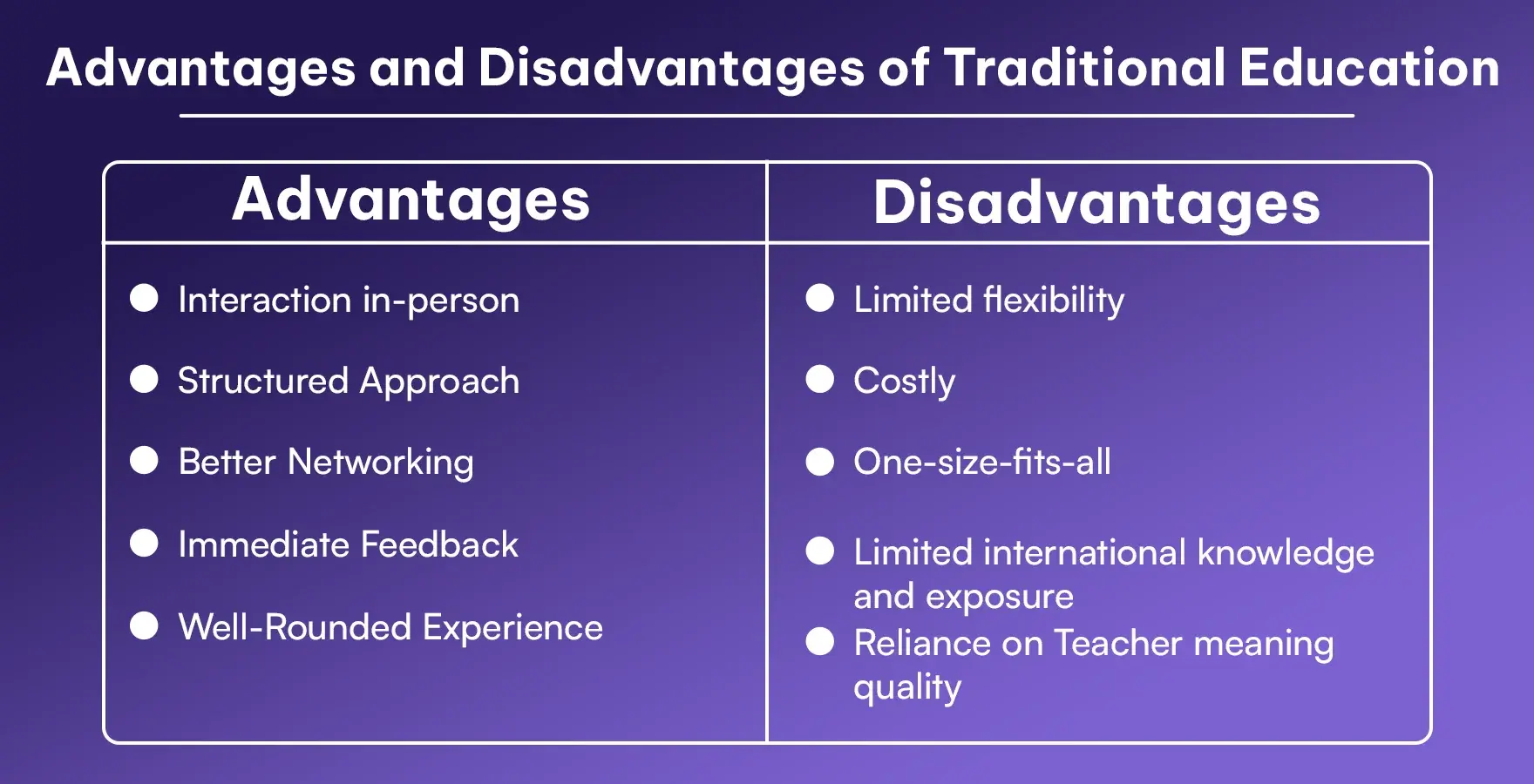
- Interaction in-person: Students can interact with the teachers face to face, parents, and other children, all of which can help students refine their communication skills.
- Structured Approach: A regular routine creates an environment of routine and fosters focus and discipline.
- Better Networking: Being physically present can create the opportunity to form friendships or mentorships organically with fellow classmates more naturally.
- Immediate Feedback: Teachers can assess students' emotions regarding their efforts or academic learning and offer assistance immediately when needed.
- Well-Rounded Experience: Facilitated experiences with other students, including classroom activities, sports, and school events can foster student teamwork and development within the social domain of expanding their peer group.
Disadvantages of Traditional Education
- Limited flexibility: With classroom attendance and fixed schedules, it can be challenging to create personal time for kids to attend to their own interests.
- Costly: Tuition, transportation and materials can become a financial burden.
- One-size-fits-all: Not all students are able to learn at the same pace or the same way.
- Limited international knowledge and exposure: When learning in a classroom, geographic locations may limit exposure to information, knowledge, and experience.
- Reliance on Teacher meaning quality: In education, as in so many other professions, the quality of learning will vary based on the teachers knowledge and expertise related to the subject matter.
Why Classroom Learning is Better Than Online
Despite eLearning’s popularity, classroom learning holds its ground for several strong reasons.
- Human Connection: Nothing can replace real-time discussions and peer collaboration.
- Accountability: Regular attendance and teacher supervision encourage consistent effort.
- Character Building: Schools don’t just teach academics; they teach patience, teamwork, and social etiquette.
While AI homework helpers make learning smarter, classroom education makes learning deeper.
Do Students Learn Better Online or in a Classroom Study?
It depends on the student.
Visual learners or self-disciplined individuals often thrive in online settings, while others benefit from structured environments.
Research shows that blended learning, combining online and offline methods, achieves the best results. It offers the flexibility of digital tools and the emotional connection of classrooms.
Is Online Learning Better or Worse for Students?
Neither is universally better or worse.
However, online learning can sometimes reduce social interaction and practical experience. Still, its benefits, such as global access, cost-effectiveness, and AI support, make it an incredible option for many students worldwide.
Are Students More Successful Through Online Learning?
According to several studies, students who use adaptive eLearning tools often score higher than those in traditional classes.
Why? Because they learn at their own pace, get instant feedback, and can revise anytime.
The key is self-discipline, success depends more on consistency than the platform itself.
Is Online Learning More Effective Than In-Person Learning?
In certain areas, yes. For theoretical or technical subjects, online methods can be even more effective. AI-powered systems track progress and highlight weak spots instantly.
However, for courses needing lab work, teamwork, or hands-on tasks, in-person learning still has the edge.
Is eLearning a Good Substitute for Classroom Learning?
It’s a strong alternative, not a full replacement. eLearning excels in flexibility, affordability, and global access. But classroom learning continues to nurture emotional intelligence, public speaking, and collaboration, all essential life skills. A hybrid model combining both could be the perfect solution for the future.
Differences Between Online Learning vs Traditional Learning
The primary distinction between online education and classroom education has to do with where, how, and when learning occurs. Online education happens in a digital setting, enabling a student to learn any time and from any place. Online education usually relies on a variety of different technologies, such as video lectures, AI-assisted homework helpers, discussion forums, and digital tests, to deliver a lesson.
Classroom education, on the other hand, occurs in a traditional physical learning environment in which students and teachers are together and may interact face-to-face, follow an established schedule, and utilize direct communication. The classroom setting also serves as an opportunity for students to stay on task, work together, and engage consistently with each other and their teacher.
Online education provides a learning experience that fosters flexibility, personalization, and global accessibility, while classroom education emphasizes structure, discipline, and social connection. Another significant difference in the two modes of education lies with assessment: eLearning typically utilizes grading assistance through automated and/or AI-assisted grading, while classroom education utilizes manual traditional grading and personalized teacher feedback.
In the simplest possible terms, eLearning affords students the opportunity and flexibility to learn at any time and any place, while classroom education provides an established schedule and human connection that cannot be fully replicated digitally.
Which is Better: Online Learning vs. Classroom Learning?
If you prefer flexibility, affordability, and self-paced progress, go for eLearning.
If you value discipline, face-to-face interaction, and structured education, stick with classroom learning.
In the end, the best approach depends on your goals and lifestyle.
Conclusion
eLearning and traditional classroom education have both changed the landscape of education in significant ways.
While online platforms and AI-driven homework helpers allow for accessibility and personalization, the classroom experiences foster human connection and well-rounded personal development. In actuality, education is more about the mentality of the learner than it is about the style of learning. Whether you are participating in a course in person or through a screen, your level of curiosity, consistency, and passion will determine how successful you will become.
If you're a student, then I would prefer you to choose platforms like Assignmentgpt AI as your e-tutor, which provides a lot of tools, which will help you in exams, tests and assignments too.
FAQs
1. What is the core difference between eLearning and the classroom?
2. Is eLearning better for working professionals?
3. Can online learning replace teachers?
4. What is an AI homework helper?
5. Which mode of learning is more cost-effective?
6. Is online education effective for children?
7. Do employers accept online degrees?
8. Is classroom learning a thing of the past?
9. How can students stay engaged in their online classes?
10. Which mode of learning produces the best results?
11. What skill or skills do you develop through the traditional learning environment?
12. What will education look like in the future?
Content writer at @AssignmentGPT
Ashu Singh, content writer at AssignmentGPT, crafting clear, engaging content that simplifies complex tech topics, with a focus on AI tools and digital platforms for empowered user experiences.
Master AI with
AssignmentGPT!
Get exclusive access to insider AI stories, tips and tricks. Sign up to the newsletter and be in the know!

Transform Your Studies with the Power of AssignmentGPT
Empower your academic pursuits with tools to enhance your learning speed and optimize your productivity, enabling you to excel in your studies with greater ease.
Start Your Free Trial ➤Start your success story with Assignment GPT! 🌟 Let's soar! 🚀
Step into the future of writing with our AI-powered platform. Start your free trial today and revolutionize your productivity, saving over 20 hours weekly.
Try For FREE ➤
